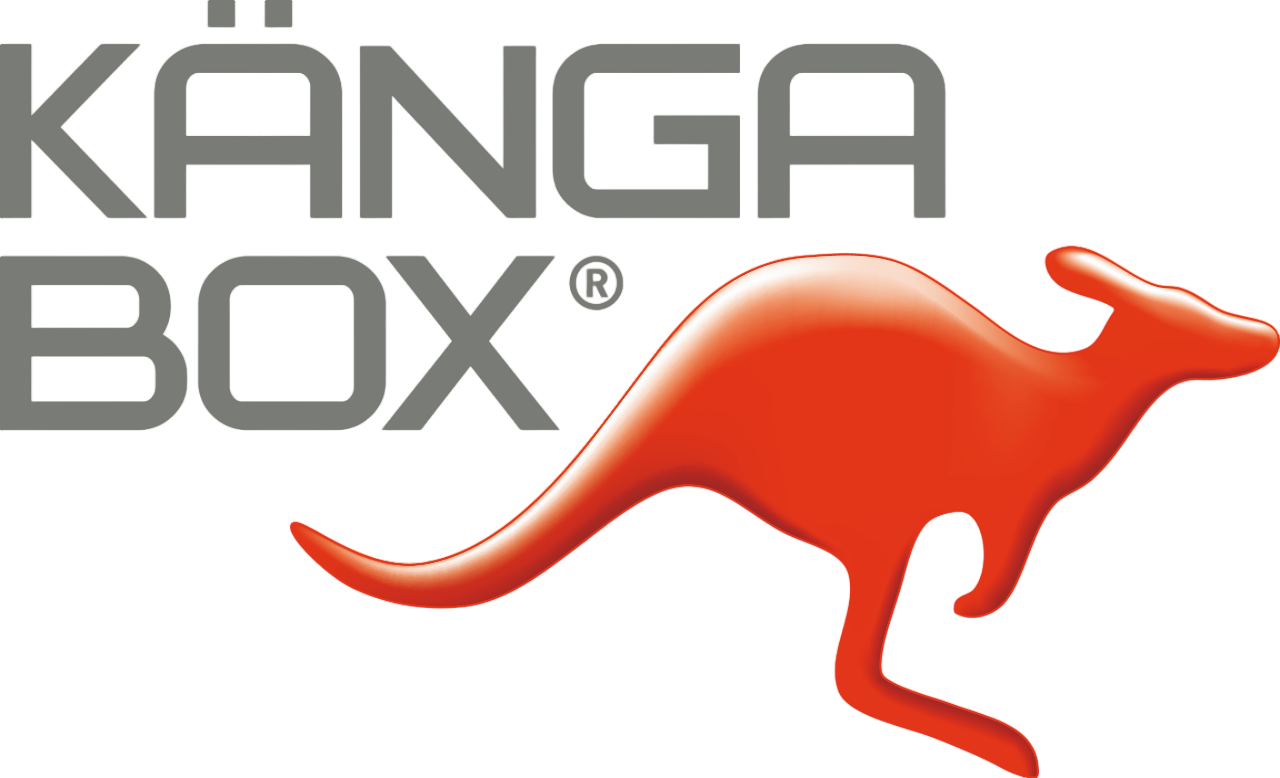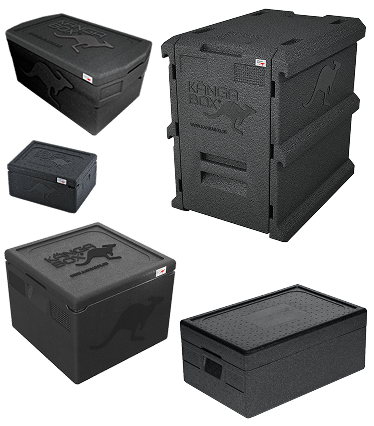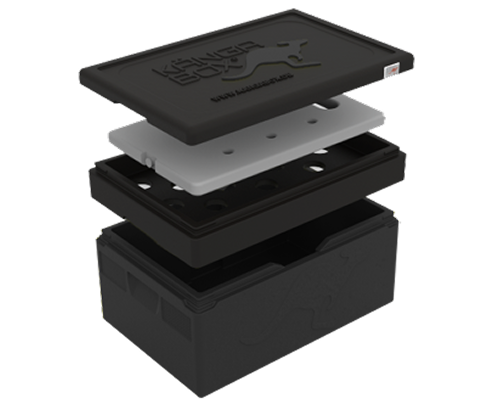Hot things stay hot and cold things stay cold.
The thermobox temperature test
A special test procedure provides clarity regarding the temperature of the thermal box under cold and hot operating conditions. The KÄNGABOX® Professional Fresh Blue PR3217FB is put to the test in both cold and hot temperature ranges.
THE TEST PROCEDURE ACCORDING TO DIN EN 12571
A food transport unit must meet specific requirements. Testing takes place in a climate chamber maintained at a constant ambient temperature of 25°C. Measurements begin after the water in the food containers reaches a defined initial temperature. The test lasts three hours. If the temperatures remain within the specified limits, the test is passed. These requirements apply to the local and short-term transport of ready-to-eat food. Within this temperature range, hygienic and toxic risks, as well as quality losses, are minimized.
THE CLIMATE CHAMBER
The climate chamber ensures a constant ambient temperature of 25 °C during the testing procedure.
Several thermocouples are connected to the temperature sensor. The sensors are located on the outside, inside at the bottom, on the side, and in the middle of the container.
HOT STAYS HOT
And indeed, it's hotter than the European standard requires. Compared to the specifications in DIN EN 12571, a 41% improvement in performance can be achieved. According to the DIN standard, the contents of the transport unit must not fall below a temperature of 65 °C after a three-hour test. The initial temperature is 75 °C. This results in a maximum temperature drop of 10 K. The KÄNGAOBOX® completes the test at a temperature of +68.9 °C. This corresponds to a difference of 6.1 K and an average temperature drop of 2 K per hour.
COLD STAYS COLD
Specifically, it performed colder than required by the European standard. In fact, this test demonstrated a result 42% better than required by DIN EN 12571. According to the DIN standard, the contents of the transport unit must not exceed a temperature of 7°C after a test duration of three hours. The starting temperature for this test is 3°C, resulting in a maximum temperature increase of 4 K. The KÄNGABOX® completed the test at a temperature of +5.3°C. This corresponds to a difference of only 2.3 K and an average temperature increase of just 0.8 K per hour during the cold holding period.
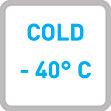
Under cold operating conditions
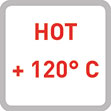
Under hot operating conditions
Ambient temperature
25°C
25°C
Initial temperature
3°C
75°C
Test duration
3 hours
3 hours
Final temperature according to DIN
7°C
65°C
Final temperature KÄNGABOX®
5.3°C
68.9° C
Difference of the KÄNGABOX®
+2.3 K
- 6.1 K
Change per hour
Average increase of 0.8 °C per hour
Average decrease of 2 °C per hour
